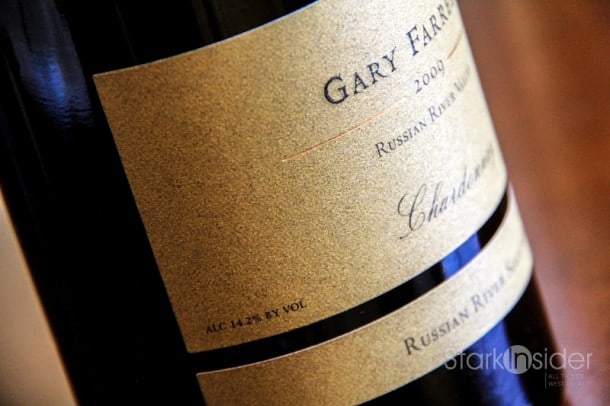
Turns out, that according to wine writer (and blogger) Dave McIntyre, Bonny Doon has both humor and integrity, especially when it comes to wine labels.
He penned an interesting piece in The Washington Post that explores that murkiest of murky areas: disclosure on wine labels. How much, he asks, should the label disclose? In the case of Bonny Doon, the answer is delightfully more than necessary. It may shock you out of your Birkenstocks to discover that the revered hippie cult Wine Messiah himself, Randall Graham, would go against the grain and do something… different.
Dirty secret, revealed.
According to McIntyre this is exactly the case. Along with noting a particular bottle of BD Vin Gris de Cigare was from “EARTH” Graham also sees fit to include all that additional human stuff that could perhaps somewhat moderate the romanticism of wine. Words like “tartaric acid” and “sulfur dioxide” – yep, uh, what’s the trellising systems look like for those?! In the end, McIntyre takes us to the East coast where the full-disclosure for wine labels movement began. When it comes to labeling, why not treat wine like a food, say, like tomatoes?
Then there’s alcohol and labels.
The terrific April edition of Wine Spectator (Tim Fish’s piece “Playing for Real”, a profile of Pixar legend and all round nice guy John Lasseter and his wife’s new adventures into wine-making absolutely put a smile on my face) includes a feature on — what else — labels, but in the context of disclosing alcohol levels. The story is really about the steady rise of alcohol in wines. What’s interesting is the level of latitude given by regulators:
- If a wine contains less than 14% alcohol, the label can report within +/- 1.5%
- Over 14% and the tolerance is only 1% either way
As the article points out these rules mean that Cab you’re enjoying over dinner with 12.5% alc. could in fact be anywhere from 11-14%. Quite the disparity! Though, as Chuck Wagner (Caymus) and others argue, does alcohol content really matter if the balance is there? So long as you or I can’t taste the alcohol isn’t that the more important consideration?
I know labeling is not exactly the stuff of rock ‘n roll, but for wine enthusiasts and geeks it does raise interesting questions and gives us insight into some of the decision-making processes related to not only producing wine, but also into marketing it to consumers.
For quick wine label primers and trends on alcohol levels :
- Wine Spectator (April) – “Finding the Sweet Spot” and “Alcohol on the Label”
- The Washington Post – “Wine: What should the label disclose?”
As for tartaric acid, sounds like a perfect sub-plot for Bottle Shock 2.


